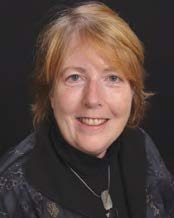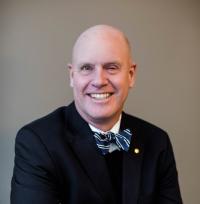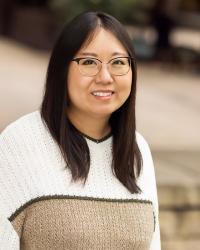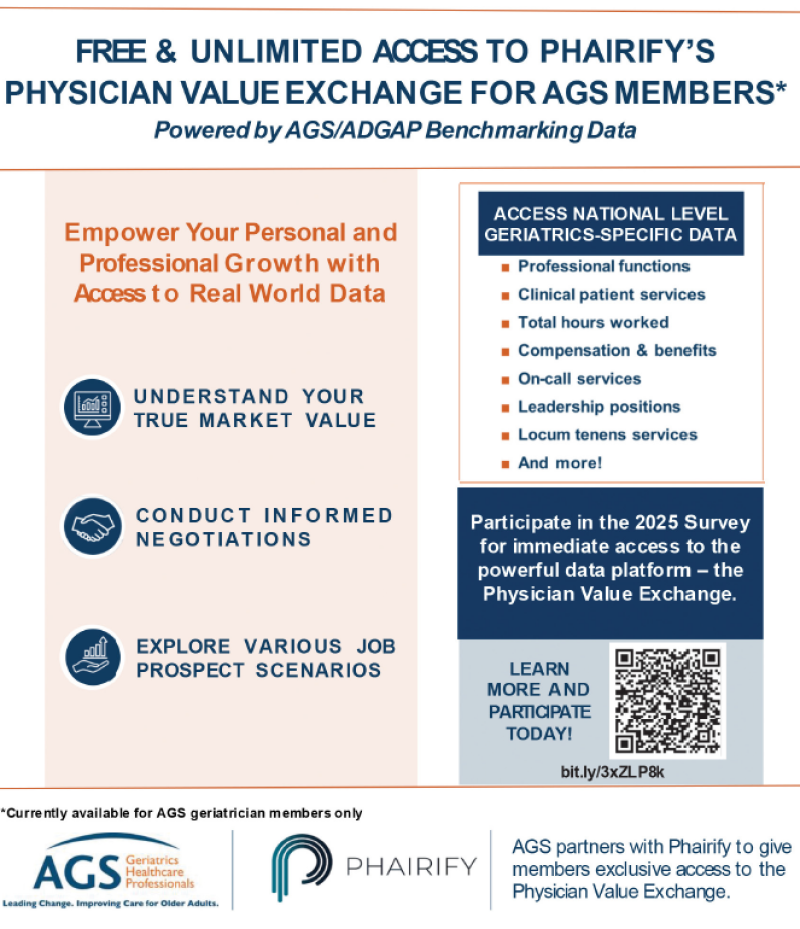The AGS/ADGAP Leadership & Life Skills Curriculum (LLSC) is back for another year, offering a unique opportunity for AGS Fellows-in-Training (FIT) and Early Career Professional members to develop and enhance skills that are essential for success throughout their career. Designed to be flexible and easy to fit into busy schedules, the free virtual program will run from August 2025 – July 2026. Registration for the 2025-2026 program is free, exclusively for AGS FIT and Early Career Professionals, and will close on September 26, 2025.
The AGS/ADGAP Leadership & Life Skills Curriculum has been empowering early-career geriatrics professionals for several years now. Since its launch in 2021, the program has welcomed approximately 300 participants—spanning fellows-in-training and young faculty in many different disciplines. Helen Fernandez, MD, MPH, whose vision has shaped the program from the start, serves as the course director. She has led its evolution with energy and insight, “This work is about preparing early career health professionals to meet the challenges of an aging population. It’s incredibly rewarding to see how these programs inspire fellows and other young professionals to take on leadership roles and improve care at all levels.”
Greg Pawlson, MD; Lynn Flint, MD; and Mary Amory, MBA who were co-developers of the original program, helped to ensure the inclusion of a broad range of practical leadership, life and career related knowledge and skills for fellows and early career health professionals.
The AGS/ADGAP Leadership & Life Skills Curriculum is structured around a series of online modules that include online presentation slides, audio companions, reflection exercises, and suggested readings. Interactive workshops, led by the curriculum authors and advisors, focus on select module topics. These sessions use case studies, small group exercises, and discussions to reinforce key content. Throughout their time in the program, participants also have access to an online community where they can continue the conversation and ask questions, network, and connect with colleagues and faculty. Topics include emotional intelligence, goal setting, burnout prevention, effective communication, adult learning principles, and negotiation strategies. Those who successfully complete the program requirements are eligible for a certificate of completion.
What sets this program apart is its holistic approach: leadership is viewed not just as a set of administrative skills and talents but as a lifelong skill set grounded in self-awareness, empathy, and adaptability. Past participants have praised the curriculum for helping them navigate career transitions, build confidence, and find joy and meaning in their work amid the demands of academic and clinical life. Be sure to check out our Member Profile feature to read how Dr. Maki Nakazato’s participation in the AGS/ADGAP Leadership & Life Skills Curriculum couldn’t have come at a better time in her career.
The deadline for registration for this year’s program is September 26, 2025. The AGS/ADGAP LLSC participants will have access to the Online Educational Modules and the Online Community through July 1, 2026. For more information and to register for the LLSC, please visit https://leadershipskills.agscocare.org/. For additional questions about the AGS/ADGAP Leadership & Life Skills Curriculum, please contact Deena Sandos at dsandos@americangeriatrics.org.
"This course has helped me to shape my own leadership, communication, and feedback style that I will continue to carry forward in my practice. I have especially appreciated the self-reflection exercises, particularly the modules on emotional intelligence that have helped me understand what kind of leader I am, and what leadership really means."
Sara Shu, D.O. | Mayo Clinic | Rochester, MN
"During our mindfulness workshop, I joked that I’m always newly surprised to feel calmer after a breathing exercise. I rarely initiate such tools on my own and tend to start off distracted— thinking about emails or unfinished notes—and reluctantly close my eyes. And yet, by the end of the exercise, I do feel calmer. Amazing! It must be magic!"
Reema Navalurkar, MD I Geriatric Medicine Fellow | University of Washington
"This course reminded me that emotional intelligence is not about suppressing our emotions, but rather about recognizing them, regulating them, and using that awareness to guide our interactions thoughtfully. It has been a meaningful part of my professional growth, helping me stay grounded and empathetic especially in moments of vulnerability."
Hatice Caliskan, MD I Geriatrics Fellow (2024-2025) | Baystate Medical Center
"I want to thank all the organizers for this wonderful curriculum and for the learning it has provided. I have noticed small but meaningful changes in my encounters with patients and colleagues alike. I hope to continue applying the lessons I have learned in this course throughout my career."
Nihan Farooq, MD I Geriatrics Fellow PGY-4 | Baylor College of Medicine
"In geriatrics, emotionally complex conversations are common. A key takeaway from the course for me was that the ability to flex communication styles—guided by curiosity, respect, and intentional listening—can be the bridge to deeper understanding and trust."
Victoria Nguyen, DO, MS I Geriatric Fellow | Beth Israel Deaconess Medical Center

 I am writing this column on the anniversary of the day that President Lyndon Johnson (LBJ) signed the Medicare and Medicaid Act into law (July 30, 1965). One of the back-stories to the passage of the bill is that once it passed Congress, LBJ loaded up two planes with dignitaries and headed to Independence, Missouri so he could sign the legislation with former President Harry Truman at his side, as he considered Truman to be the real father of Medicare. After signing the bill, he enrolled Truman as the first Medicare beneficiary. If you are interested in learning more about the history of how the Medicare program came to be, see the 2017 column from Bill Moyer,
I am writing this column on the anniversary of the day that President Lyndon Johnson (LBJ) signed the Medicare and Medicaid Act into law (July 30, 1965). One of the back-stories to the passage of the bill is that once it passed Congress, LBJ loaded up two planes with dignitaries and headed to Independence, Missouri so he could sign the legislation with former President Harry Truman at his side, as he considered Truman to be the real father of Medicare. After signing the bill, he enrolled Truman as the first Medicare beneficiary. If you are interested in learning more about the history of how the Medicare program came to be, see the 2017 column from Bill Moyer, 


